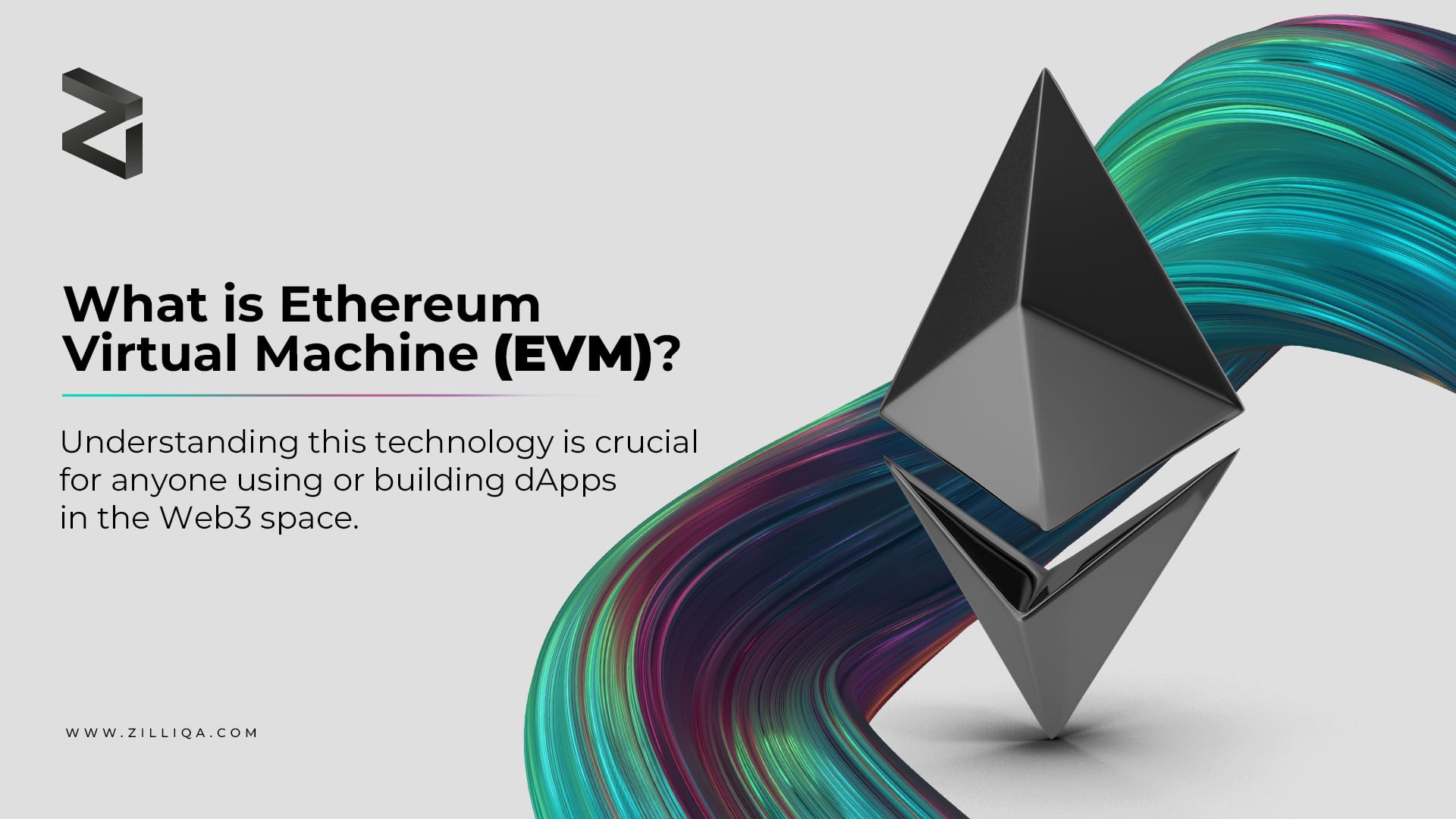What is Ethereum Virtual Machine (EVM)?
Let's take a look at EVM and why it is so important for Web3 applications.

Whether you've been in the Web3 space for years or are a newcomer to crypto, chances are you've heard of EVM.
The Ethereum Virtual Machine (EVM) is a key technology at the heart of many popular blockchain networks, including our upcoming Zilliqa 2.0 network upgrade.
As Zilliqa continues to expand its EVM compatibility and embrace native EVM execution, understanding this technology is crucial for anyone using or building dApps in the Web3 space.
A Distributed Computer
At its core, the Ethereum Virtual Machine acts as a distributed computer that runs on Ethereum and other EVM-compatible networks.
Think of the EVM as a global, decentralised processor that executes smart contracts and dApps on the blockchain. Each Ethereum node runs an instance of the EVM, enabling it to process transactions and execute smart contracts (pieces of functional code) on the blockchain.
The EVM's design allows it to operate in a trustless environment, where no single entity controls the system. Instead, the network's consensus mechanism ensures that the EVM executes code as intended, making it a reliable platform for building decentralised applications.
Solidity and Standards
Like any computer that executes code, the EVM supports a programming language for its smart contracts. Solidity is the primary programming language used to write smart contracts on the EVM and is similar to JavaScript, making it popular and accessible to developers.
Solidity is the most popular smart contract language in the blockchain space, meaning that those networks which are EVM compatible can far more easily tap a pool of Web3 talent and build interoperability with other EVM networks.
The EVM also enforces a set of standards, particularly for fungible tokens (ERC-20) and non-fungible tokens (ERC-721). These standards are critical for ensuring interoperability between different dApps and tokens in the EVM ecosystem.
For example, the ERC-20 standard defines the rules for creating tokens that can be easily exchanged across different platforms and applications. This has been a driving force behind the widespread adoption of EVM and its ecosystem of dApps.
Widespread adoption of EVM dApps
The accessibility of Solidity and the adoption of EVM has led to a wide variety of dApps being built for this platform across multiple blockchains.
MetaMask, one of the most popular Web3 wallets, supports EVM-compatible chains, allowing users to interact with dApps on Layer-1 (L1) and Layer-2 (L2) networks seamlessly.
This cross-chain compatibility is essential as it enables users to manage assets and execute transactions across different blockchain ecosystems without needing to switch wallets or learn new interfaces.
Zilliqa as a Layer-1 EVM Network
As blockchain technology evolves, the role of EVM in enabling interoperability becomes increasingly important. Layer-1 chains like Ethereum are foundational networks, while Layer-2 solutions offer scalability by processing transactions off the main Ethereum chain.
Zilliqa currently operates as a layer-1 network with EVM compatibility built on top of its original execution layer. With the launch of Zilliqa 2.0, we will deliver a layer-1 network with native EVM compatibility that can compete with layer-2 networks in terms of scalability.
This means EVM developers will easily be able to build on Zilliqa, and we will be able to seamlessly integrate our network with other EVM-compatible blockchains.
Beyond taking an interoperable approach to EVM support, Zilliqa 2.0 is also poised to lead the charge in mass adoption of Web3, making the technology as easy to use and as accessible as the internet.
Stay tuned to our blog and socials - we will soon take a deeper look at how EVM is deployed on Zilliqa and Zilliqa 2.0 will leverage EVM to unlock easier cross-chain transactions, more liquidity opportunities, and better interoperability.
